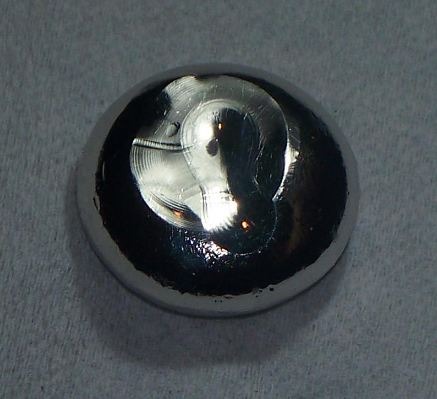Iridium, a chemical element with the atomic number 77 and the symbol “Ir” and in the periodic table, is regarded as one of the rarest elements on Earth because of how difficult it is to obtain and how scarce it is on the planet’s crust. This element is a hard and brittle transition metal that has a silvery-white color. Iridium is the second densest element listed in the periodic table, with the first being osmium, an element that was discovered with iridium at the same time. Who discovered iridium? And what are its applications in today’s society? Let us find out as we get a closer look at the interesting discovery of iridium.
Discovery of Iridium
Iridium, osmium, and other elements that belong in the platinum group would not be discovered if platinum was not found by a group of miners in Colombia during the 17th century. After the discovery of the said element, it found its way in Europe as a profitable material for Spain. In Europe, the element is named “platina,” which is a Spanish word for “silverette,” because of how it closely resembles silver. From then on, many chemists started studying the intricacies and mysterious behind the element.
One of the first chemists to have studied platinum was Smithson Tennant, who is also responsible for discovering osmium. Tennant was able to find out about iridium in 1803 when he started dissolving platinum ore in aqua regia, a mixture of nitric and hydrochloric acids, and after the process, he saw a dark and insoluble residue left from the mixture. The chemist then began analyzing the residue and discovered that it contains a new metal that is not yet identified in the periodic table. After further analysis, Tennant found out that the residue actually contains two new metals, and these metals were osmium and iridium. Tennant named osmium after the Greek word “osme,” meaning “smell,” due to the distinct smoky smell that it produces once it was isolated as a sole element. Then, he named iridium after the Greek rainbow goddess Iris, because of the array of colors that it produces under bright lights. Tennant finalized his research and documented his findings in a letter sent to The Royal Society of London For Improving Natural Knowledge, now known simply as the Royal Society, on June 21, 1804.
The first man to obtain high-purity iridium was American chemist Robert Hare, who achieved the feat in 1842. In that high-purity iridium, Hare discovered that the density of the element is approximately 21.8 g/cm3, and it has nearly unmalleable properties, which means that it was difficult to burn and melt. The first chemists that were able to melt a sufficient amount of iridium were Jules Henry Debray and Henry Sainte-Claire Deville in 1860. These two chemists melted iridium by burning more than 300 liters of pure dioxygen and dihydrogen gasses along with it. Then, in 1880, chemists John Holland and William Lofland Dudley successfully melted iridium by utilizing phosphorous for the burning process. They would eventually patent this produced in the United States around the same year.
One of the first uses of iridium was conducted in 1933, when Otto Feussner used iridium and another element, called ruthenium, to make thermocouples, which are electrical devices that help in measuring temperature. By using iridium, Feussner was able to improve his thermocouple’s ability to measure temperatures under extreme conditions, as the device can now measure up to 2000 degrees Celsius.
Iridium also serves as an essential component in one of the greatest scientific discoveries. This discovery was spearheaded in 1957 by Rudolf Mössbauer, a German physicist who found out about the resonant and recoil-free absorption and emission of gamma rays by atoms that are found in an iridium-only metal sample. This occurrence would later be known as the Mössbauer effect, which would eventually contribute to dozens of discoveries and studies related to physics, chemistry, and mineralogy. Because of his landmark discovery, Mössbauer was awarded the Nobel Prize in Physics in 1961. Then, in 1986, Mössbauer was awarded the prestigious Elliot Cresson Medal and the Albert Einstein Medal.
Today, there are only three tons of iridium that can be produced per year because of its scarcity. Interestingly, meteorites that would often fall on Earth have higher amounts of iridium than the planet’s crust, and scientists believed that the unusually high volumes of iridium in the clay layer of underneath the Earth’s surface could be evidence that there was a massive extraterrestrial object, possibly a meteor, that caused the extinction of dinosaurs around 66 million years. However, there is still no concrete evidence to support that claim, but the irregular amount of iridium in a particular part of the planet is baffling for many scientists, hence the reason why the element iridium is still being studied to this day.


